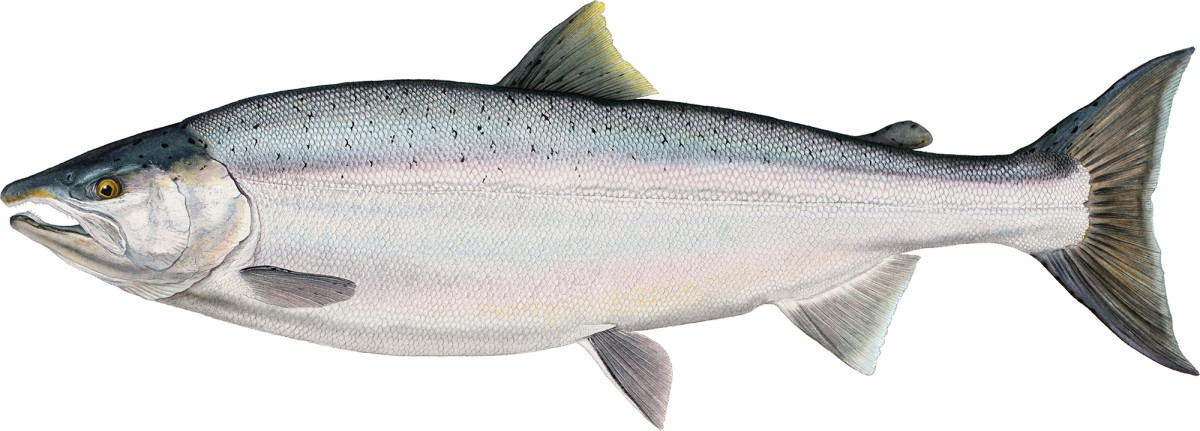
Other Types of Alaskan Salmon At a GlanceĬoho and sockeye salmon are popular wild-caught species, but you might be wondering about other Pacific salmon you've come across in restaurants in grocery stores:Ĭhinook Salmon (aka King Salmon): Generally the largest and known for its high fat content.Ĭhum Salmon (aka Keta, dog salmon): The males develop canine-like teeth when they spawn, which explains the nickname "dog salmon." Chum are generally leaner than sockeye salmon and are mostly sold in grocery stores. When you’re integrating coho into your diet, perhaps a few fillets each week, you’re getting your recommended dose of EPA and DHA from a delicious meal, not from a pill. EPA and DHA are especially important components of brain health, making them essential fats for us while we’re in the womb, developing into adults, and living out our best lives in our golden years. A 6-ounce fillet of sockeye has about 15 grams of fat, while coho packs about 9 grams both species are rich in anti-inflammatory omega-3 fatty acids that are prized by health nuts and underconsumed by the average person.īut while sockeye edges out coho in terms of its astaxanthin content, a fillet of coho has the highest content of EPA and DHA of all the wild Alaskan species, the omega-3 fatty acids that we are looking to consume when we buy something like fish oil supplements. Coho Salmon: Oh My, Omega-3sīoth wild sockeye and coho are lean machines, with coho being the leaner of the two. Coho, being a more subdued shade of red, contains about half as much astaxanthin than sockeye. Sockeye just happen to eat the most zooplankton of all: The redder the fillet of salmon, the more astaxanthin we’re eating. In fact, all types of salmon get their pink-orange-red flesh because of this dietary component. Whether these carotenoids are plant or fish based, the nutrition gets passed all the way up the food chain to us when we make them part of our meal. Carotenoids are commonly found in red-orange foods like sweet potatoes, carrots, and squash.


It’s the direct result of an antioxidant compound called astaxanthin, a carotenoid that the salmon consume in their diet. Wild Alaskan sockeye’s striking red flesh is a reflection of its diet, one that’s high in nutritious algae and zooplankton - which include tiny crustaceans like krill - and gives it its signature color. When you take a closer look at what’s in sockeye and coho, this is where the two species diverge for you as the consumer. Its flesh isn’t as deeply red as sockeye, but wild coho is still a robust red-orange.
#Coho salmon skin
This makes it the most photogenic of salmon, from a food photographer’s standpoint! Its distinctive color also makes it the easiest to identify, if you’re new to salmon or new to identifying fish fillets in general: When you see a fillet of richly-hued fish, you can bet your money that it is a fillet of wild sockeye.Ĭoho are called silver salmon because of their radiant, silvery skin it’s perhaps not obvious when you’re looking at a coho on its own - but when you set all the species of wild Alaskan salmon side by side, the coho shines bright like a diamond.


Sockeye, otherwise known as red salmon, earned this colorful nickname because its flesh is a vibrant, saturated red. Here are the key differences between sockeye and coho salmon that we think you need to know: Meet These Pacific Salmon And perhaps most importantly, they’re both delicious.īut with all that they share in common, wild Alaskan sockeye and coho salmon have some key differences that we think you will want to understand when you’re choosing between which species of salmon you’ll be making for your next meal. They’re both healthy, clean sources of protein with nutritional benefits you can’t easily find elsewhere. Filets of sockeye and coho salmon, two popular types of wild Alaskan salmon, are both that unmistakable shade of red-pink.


 0 kommentar(er)
0 kommentar(er)
